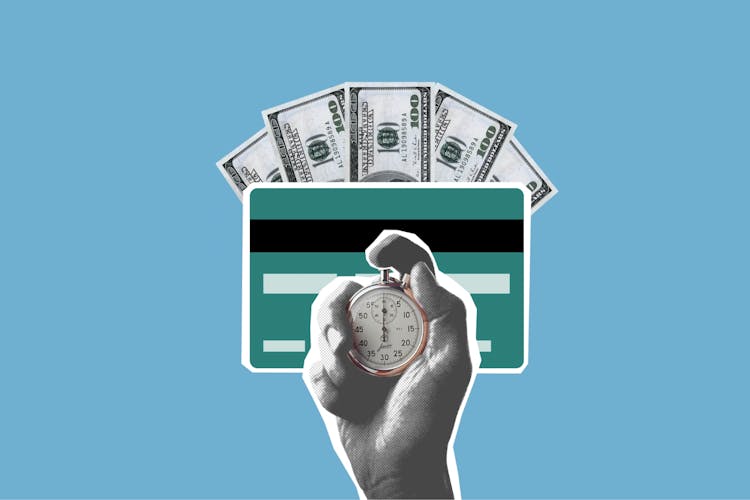What Is DNS?
DNS is an acronym for Domain Name System. To understand what a DNS means, you must first know an IP (Internet Protocol) address. Every single Internet device, ranging from computers to laptops to smartphones, can find and communicate with each other on the Internet. This is made possible by each device’s unique IP address that allows web browsers to interact with each other. However, IP addresses range from single to complex alphanumerics, and it’ll be difficult for humans to memorize them every time they need to search for something on the Internet, hence the emergence of a domain name. Humans can access particular information on the Internet through a readable language known as a domain name like xyz.com or mmz.com instead of inputting the IP address. When this happens, a DNS easily translates the readable human language to its corresponding IP address which the web browser understands and uses to load the Internet resources of the page that the searcher is looking for.
A Domain Name System is a database where all the Internet domain names are stored and matched with their corresponding IP addresses. So, domain names are for humans to understand and locate a website, while IP addresses are for machines to understand and locate the same website. This process is called a query and it typically takes seconds. Whenever a user searches for something on the Internet, let’s say using a domain name like techandclient.com, the DNS begins the process of a DNS query to find the right IP address linked to the domain name you’ve searched for. When this is done, the Internet device being used now uses the IP address to locate the Tech & Client website that you need to access.
What Does “DNS Server Not Responding“ Mean?
Whenever you see the DNS server not responding error, it’s usually because the DNS that will translate the domain name you searched for into an IP address has failed to respond, or your browser is unable to connect to the Internet. Typically, the cause of this error lies on the user’s end; it may be because of an issue with the network connection, using an outdated browser, etc. Every so often, the issue of DNS unavailability may be attributed to the server. Whatever the cause may be, addressing this issue doesn’t require any form of technical support. In this blog post, you’ll learn how to resolve the issue of DNS Server Not Responding all by yourself.
How to Fix DNS Server Not Responding Error
1. Diagnose Network Issues
This is usually the first checkpoint when it comes to fixing DNS unavailability issues. Your Internet connection may be the reason you’re unable to access a particular website. The best way to tackle this is to switch networks or refresh the same network. If you’re unable to access the website after doing this, then you can move to the next alternative solution.
2. Access With a Different Device
Another source of the issue to consider is your primary Internet device. If you get a “DNS Server Not Responding” error, try accessing the same webpage using a different device connected to the same network. If this goes through, it means that the issue is with the previous device that you used. However, if you’re still unable to access the webpage, then you can rule out your device as the source of the issue.
3. Switch to a Different Web Browser
In some cases, a DNS error may be associated with the browser you use for your search, and this can be addressed by switching to a different web browser. The way to do this is to use a different browser to access the Internet from your device. This means that if you probably use Chrome as your default browser, you can choose to use Mozilla Firefox or Microsoft Edge to access the Internet. If you’re able to successfully use the Internet with these other browsers, then you should consider getting the latest update of your default browser. If the issue persists despite doing this, then you can uninstall your browser, and reinstall it after. If you’ve tried all these, but you still get the “DNS server not responding” message on your browser, then you can conclude that your browser isn’t the source of the problem. This is the time when you start considering alternative solutions.
4. Restart Your PC
If your PC operating system isn’t functioning correctly, you will likely get the DNS Server Not Responding error message. To know whether your PC is the cause of the issue, you’ll need to restart it in safe mode (https://support.microsoft.com/en-us/windows/start-your-pc-in-safe-mode-in-windows-92c27cff-db89-8644-1ce4-b3e5e56fe234). If after your PC comes on, and you’re still unable to access the webpage that you’re trying to visit, then you should consider another alternative.
5. Restart Modem or Router
Your network devices may also be the reason you have a failed Internet connection and a DNS server does not respond. You can turn off your router or modem, then wait a while, let’s say 30 seconds before turning it back on. If your modem or router is the source of the issue, it is expected that after you restart it, you’ll be able to access the webpage without getting an error message.
6. Deactivate Antivirus and Firewall
These tools designed to protect your PC from malicious software can sometimes hinder your network connectivity. You can temporarily deactivate your antivirus and firewall programs to overcome this challenge (https://www.security.org/antivirus/turn-off/). When you do this, try using the same browser to access the website again. If it works, ensure to reconfigure the antivirus and firewall programs before you reactivate them, but if it doesn’t work, then the issue isn’t from your antivirus and firewall software.
7. Clear DNS Cache
If you’ve tried the previous alternatives and are still not making headway with it, it’s time to focus on the DNS settings. It may be that you need to clear the DNS cache or reset your IP to resolve the “DNS server not responding” issue. For guidance, here’s how to clear the DNS cache for different devices:
1. Clear DNS Cache on Windows
Step 1: On your laptop, click on the start button, then scroll down in search for Windows Systems.
Step 2: Under Windows systems, click on the dropdown and select Command Prompt.
Step 3: When it opens, enter this command: ipconfig/flushdns
Step 4: Once the process is done, you’ll be notified that your DNS cache has been cleared.
2. Clear DNS Cache on MacOS
To flush the DNS cache on Mac, you need to know the version of macOS you’re running with. To do this, you have to click on the apple icon in the top left corner of your desktop, then select “About This Mac“. Some information will be displayed and you’ll see your current version listed there.
Once you’ve done that, use the following steps to clear your DNS cache.
Step 1: Click on Go to open the command line interface OR open Finder, then click on Applications.
Step 2: Select Utilities folder
Step 3: Open Terminal
Step 4: Run the command
Step 5: Input your password to execute this command. Your DNS cache should be cleared after you do this.
This process is the same for all versions of macOS, but different commands are used to run the prompt to clear the DNS cache
macOS version 10.11 and above
Run the command sudo killall -HUP mDNSResponder
macOS Yosemite (10.10)
Run the command sudo discoveryutil udnsflushcaches
macOS Lion (10.7), Mountain Lion (10.8), and Mavericks (10.9)
Run the command sudo killall -HUP mDNSResponder (same command with versions 10.11 and above)
macOS Snow Leopard (10.6)
Enter the command sudo dscacheutil -flushcache
macOS Leopard (10.5)
Input the command sudo lookupd -flushcache
3. Clear DNS Cache on Chrome
Step 1: Open Google Chrome on your PC
Step 2: Type chrome://net-internals/#dns into the search bar
Step 3: Click on Clear host cache
4. Clear DNS Cache on Linux
Firstly confirm the service that your Linux system runs with because it’ll determine the command you’ll use to clear the DNS cache.
Step 1: Press Ctrl+Alt+T. You’ll see a terminal window open when you do this.
Step 2: Type in the command
Step 3: Enter your password to execute this command.
Below are the commands for different Linux systems:
NCSD: sudo /etc/init.d/nscd restart
Dnsmasq: sudo /etc/init.d/dnsmasq restart
BIND: You may have to try multiple commands:
sudo /etc/init.d/named restart
sudo rndc restart
sudo rndc exec
After you enter your password, you’ll receive a confirmation message that the cache has been successfully cleared
8. Change Browser DNS
Another way to get around this is to change your default DNS browser. By default, a DNS is provided by your web browser, but you can customize the DNS browser on Google Chrome. Here’s a step-by-step guide on how you can do this:
Step 1: Refresh your laptop home screen
Step 2: Open Chrome
Step 3: Locate the 3-dot menu on the top right corner of your screen and click on it.
Step 4: Click on settings from the options displayed
Step 5: Click on Privacy & Security from the settings option
Step 6: Select Privacy
Step 7: Scroll down to select the advanced option
Step 8: Click on use secure DNS
Step 9: Under use secure DNS, select with and expand the options next to it
Step 10: Select custom and input the DNS url that you want OR select Google public DNS
That’s how you change your browser DNS. When you do this, check back if you’re able to access the webpage that you want to visit.
Conclusion
Whenever your device is unable to connect to a DNS server, the cause is usually unknown initially. However, in the process of trying to resolve it, you’ll figure out the cause. This article has provided answers to what a DNS is and the likely solutions to solving DNS issues. We hope that you’ll find this article helpful in resolving the “DNS server not responding” issue that you may experience at any time. If you still encounter any issues, don’t hesitate to contact us via https://techandclient.com/contact-us/




